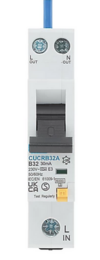I must admit that it would be very rewarding to get a credible explanation and then see what we are missing.
Very much so. We've seen a few near-assertions from people who seem to think that they know the 'obvious explanation' but they either haven't shared enough detail or else have provided 'explanations' which make no sense to me (maybe because of my 'stupidity')..
I`m starting to get that Monty Hall feeling feeling about this one. I`d be more than happy to get the answer then kick myself for missing it.
Again, quite so. Despite the fact that some people have suggested or implied that I have been "arguing for arguing's sake" (or trying to 'increase my post count' !!) I genuinely don't fully understand what this is all about. I therefore presume that I must be 'missing something', maybe something 'obvious' - and, like you, would be only too pleased if someone could help me understand what I'm missing and/or 'why I am being stupid.
As things stand, it still seems to be the case that no-one has really offered any suggestions as to how a (credible) RCD could fail to detect a residual current if it were connected 'the wrong way around' (or why anyone would produce a device with such functionality) - and the nearest we seem to have got to any 'explanation' having been suggestions (not all particularly credible, in terms of detail) that the device may be damaged if installed in a manner contrary to its marking and the MIs.
However, there are surely plenty of things that might be damaged if someone connects wiring to its terminals in a fashion contrary to that indicated by markings and/or MIs, so, if that were the only issue with the RCDs, then why single out this one situation for an 'Emergency Amendment' to BS7671.
However, it seems worse than that. If there are some RCDs which could be damaged by being connected contrary to their markings, then, again, that would be true regardless of whether "bidirectional power flow was possible" (which is the only situation to which the proposed 530.3.201 applies.
Also, no-one yet seems to have commented upon my having reminded us that
no RCD could possibly ever protect against an L-E fault which was on the side of the device which, at the particular moment in time, happened to be 'the supply side' - which seems to introduce some doubt/uncertainty into the whole issue we are discussing.
It does seem that those of us who are prepared to admit that this is the case must surely be 'missing something'??
Kind Regards, John


